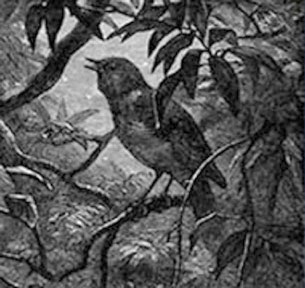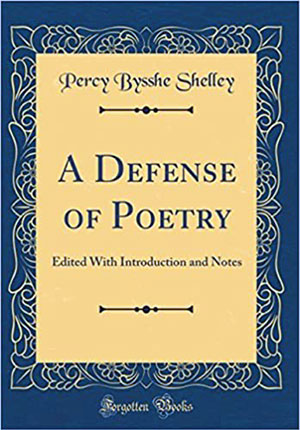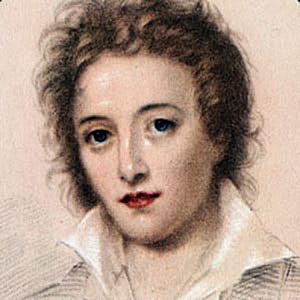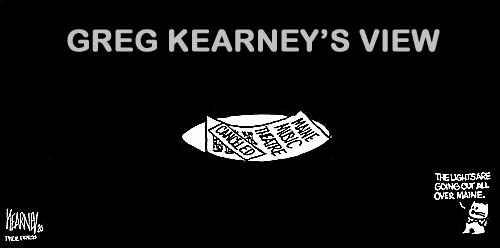|
I penned this essay some time ago and delivered as a community lecture, urging support of the arts, cultural institutions, and arts education. In the current crisis when artists are unemployed in huge numbers, theatres and arts institutions are being deemed “unessential,” shuttered and fighting for their very existence, it might behoove us all to pause and reflect on just how vital the arts are to a civilized humanity and try to see forward to a time when it will be the arts and artists, who on once again inspire and heal us as individuals and as a society.
 A poet is a nightingale who sits in darkness and sings in solitude with sweet sounds. We are men who sit entranced by the melody of the unseen musician, who are moved without knowing why or whence. Poets are not only authors of language and music and architecture and statuary and painting; they are the makers of laws and the founders of civil society and the makers of the arts of life. Poets according to the age and the nature of the society in which they appeared were called in an earlier epoch of the world the legislators of mankind. A poet is a nightingale who sits in darkness and sings in solitude with sweet sounds. We are men who sit entranced by the melody of the unseen musician, who are moved without knowing why or whence. Poets are not only authors of language and music and architecture and statuary and painting; they are the makers of laws and the founders of civil society and the makers of the arts of life. Poets according to the age and the nature of the society in which they appeared were called in an earlier epoch of the world the legislators of mankind.
These words were written by the English Romantic poet, Percy Bysshe Shelley, in 1821.
They present a challenge for all artists and lovers of the arts in our modern world. Shelley is using the word “poet” in its most catholic sense. In his essay, “A Defense of Poetry,” he outlines these challenges, which are perhaps best defined by the images he uses to depict the poet: a nightingale, a teacher, a legislator, and a prophet.
Artists are all nightingales, crying out in the dawn, prophesying against the bleakness of the night. The artist’s voice is the voice of creativity, the tiny spark of fire that singes and warms. The artist speaks with a still, small voice of self – humble and trembling at first, then slowly gaining in courage and strength. It is the voice which lifts itself up as that of the prophet crying out in the wilderness. The artist sings out a vision to others to open their eyes to beauty, their ears to transcendent vision, their hearts to a rarer universe. The artist-nightingale is confronted, too, with the challenge of maintaining the purity of his song amid the confusions, corruptions, commercial distractions of the world. The artist is asked to persist in his prophecy when none do listen, when none will feed or shelter him, and when none will stop to marvel
at his work. His still, silent voice urges him to push on, to shape from the voice beauty and truth and all that we call art.

The artist is not only prevailed upon to preserve himself amid the dangers of a hostile world; he is called upon to add dimension to his private world of the arts…whether it be in the traditional world of the classroom or the larger stage where he plays out his drama. The artist cannot exist for himself alone. His voice cannot long remain a single one.
Art is not selfish; it is generous and giving, and the artist must impart the knowledge he has gained and the vision he holds to auditors, who – in Shelley’s words – remain “entranced, but uncertain and unlearned.” He teaches values, shares his skills; he must ensure the future of other artists and performers, and he must pave the way for the enlightenment of future audiences.

Art is, in itself, a teacher, and artists have a responsibility to ensure that others will follow after them and not fear to share their personal vision, or their shaping struggles and creative successes. Similarly, they have a duty to build and educate audiences in the appreciation of beauty and the enjoyment of things aesthetic. This can only be done if everyone accepts the third and most awe-inspiring responsibility of the artist: as legislator.
Art deals deeply with laws. First, there are the natural laws of art: dictates imposed by discipline, heritage, science, and search. As artist-teachers, we must promote the continuance of these laws. But the artist challenges those laws, too, breaking those with outdated meaning and finding new solutions for artistic situations. To be a valuable legislator in his own realm, the artist must be a lawbreaker, as well. From broken idols, he must build new ones He must preserve the atmosphere of freedom and flexibility, so conducive to any growth.
The artist not only makes laws for himself, but he also hopes to legislate a new future for the entire artistic community. The artist and the lover of the arts are also political creatures. They must exert their energies to meet the challenges of survival; they must help to shape laws which govern arts’ funding, patronage, the arts’ very existence. The artist must plant and nurture the seeds which sprout into future artists, future teachers, future legislators, and future prophets.

For prophecy is the ultimate function of the artist. The artist must, in the last analysis, create laws for all mankind…not narrow legal strictures, but precepts of behavior, principles of action, voices and visions of prophecy. The artist is committed to improving the quality of life around him, and he can only do this when he speaks with the conviction of a deeply held inner vision.
The vision which Shelley heard in the single nightingale’s voice is the voice of prophecy. It is the hope for a future more natural, more humane, more aesthetic…a world governed by laws which admit beauty and encourage truth. Art is the expression of truth, as the artist sees it. Truth is wholeness; it is beauty that encompasses ugliness, joy that embraces sorrow, and life that revives amidst death. Truth is the artist’s greatest challenge, and if he is successful, it becomes his métier.
The fragile nightingale, singing out in the proverbial darkens armed with truth, becomes a powerful instrument of change and healing. The nightingale, the poet, the artist holds in his song the promise of a more sensitive individual, a more caring community, and a more creative universe.

|